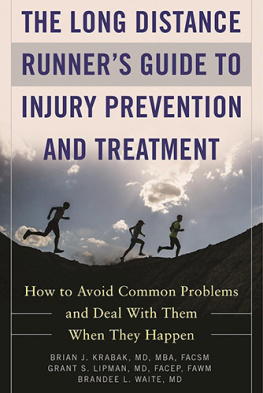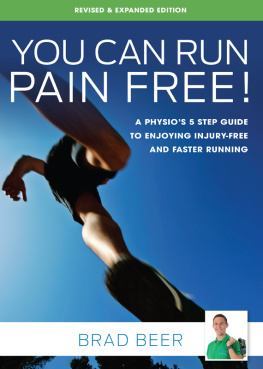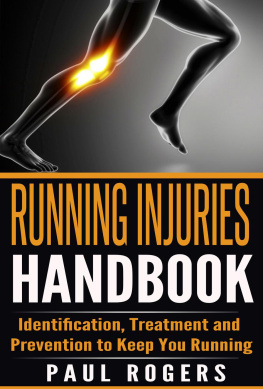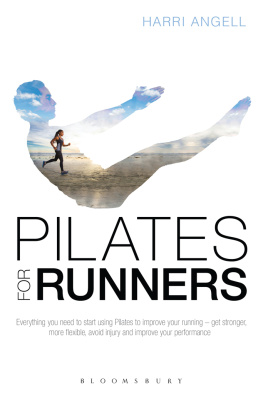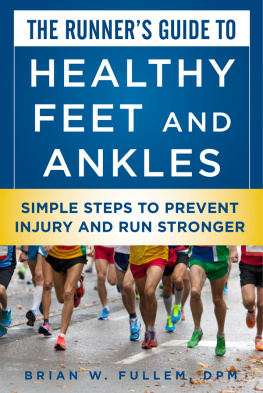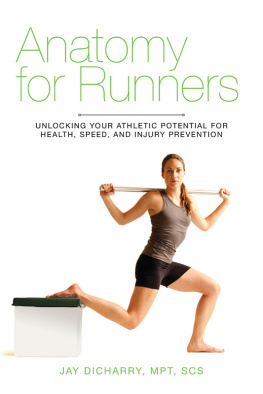Copyright 2017 by Brian J. Krabak, Wildside Medical Education, LLC, and Brandee L. Waite
All rights reserved. No part of this book may be reproduced in any manner without the express written consent of the publisher, except in the case of brief excerpts in critical reviews or articles. All inquiries should be addressed to Skyhorse Publishing, 307 West 36th Street, 11th Floor, New York, NY 10018.
Skyhorse Publishing books may be purchased in bulk at special discounts for sales promotion, corporate gifts, fund-raising, or educational purposes. Special editions can also be created to specifications. For details, contact the Special Sales Department, Skyhorse Publishing, 307 West 36th Street, 11th Floor, New York, NY 10018 or .
Skyhorse and Skyhorse Publishing are registered trademarks of Skyhorse Publishing, Inc., a Delaware corporation.
Visit our website at www.skyhorsepublishing.com.
10 9 8 7 6 5 4 3 2 1
Library of Congress Cataloging-in-Publication Data is available on file.
Cover design by Tom Lau
Cover photo credit: XEMPower/Zandy Mangold
Print ISBN: 9781510717909
Ebook ISBN: 9781510717930
Printed in China
Table of Contents
F OREWORD
Some might consider me an unlikely candidate to write the foreword for this book. Why? Because in my decades of marathon and ultramarathon running Ive never suffered an injury (with the exception of a few lost toenails).
Of course, I am something of an outlier. Nearly three-quarters of all long distance runners will incur some form of an injury during their athletic career. This is the reality most runners face.
In my talks and travels to runners around the globe, one of the most common questions I field is how to treat these various anomalies. The clear-eyed truth is that Im wholly unqualified to answer such questions. Ive never experienced a medical issue from running myselfso I have no practical advice to offerand I am not a trained medical professional. My typical response is to direct such inquires to the hodgepodge of disparate information available that deals with these topics, often in conflicting and inconsistent ways.
Ive long searched for a single unifying resource that I could recommend in such instances, and The Long Distance Runners Guide to Injury Prevention and Treatment is just that. Written by prominent leaders in sports science, as well as accomplished runners in their own right, the book offers guidance on important and diverse themes, like proper nutrition, muscular ailments, skeletal injuries, and medical illnesses caused by racing and proper recovery. This book contains valuable insights, tips, and strategies from more than two dozen medical professionals who specialize in treating endurance athletes, and this information is presented in a way that is understandable and actionable to everyday runners.
While it may be impossible to completely avoid injury, The Long Distance Runners Guide to Injury Prevention and Treatment is an indispensable tool to help those who love to run understand some of the most common causes of injuries, and learn how to best avoid and treat athletic ailments. This book belongs on every runners shelf and is destined to help all of us run healthier and happier in the miles ahead.
Dean Karnazes, ultramarathoner and The New York Times best-selling author
I NTRODUCTION
Running is one of the most common modes of exercise utilized to promote overall health and well-being. It is not just a workoutrunning is part of our human fabric. As we evolved, our ancestral survival was predicated on the ability to run long distances. Running has been transformed into a leisure activity, as technological advancements have greatly impacted how and why we run. This is evident by the exponential increase in the number of people participating in running events over the past half-century. It is estimated that in the United States alone, over seventeen million people participated in a running event in 2016, with over five hundred thousand of those completing a marathon. Furthermore, there has been a dramatic increase in the number of endurance running events around the world, with a 10 percent annual increase over the last decade and over ninety thousand participants in ultramarathons last year.
As more athletes participate in long distance running, there is a great opportunity to understand the relationship of running to injury or illness. Studies suggest most runners will eventually sustain some type of injury or illness while training or competing. Hopefully, these injuries or illnesses will have a minimal impact both on time lost from running and the athletes long-term health, especially considering that a sedentary lifestyle may contribute to significant health-related issues such as cardiovascular disease, obesity, and diabetes. Therefore, prevention, evaluation, and treatment of injuries and illnesses in the long distance runner require a comprehensive understanding of the complete athletean assessment that takes into consideration the physical, mental, emotional, and nutritional aspects of the individual athlete.
The aim of The Long Distance Runners Guide to Injury Prevention and Treatment is to discuss the unique aspects of running-related injuries and illnesses potentially encountered by athletes in the unique environments where endurance running takes place, during both training and competition. This book represents a combination of scientific rigor and practical advice written by the leading experts in the fields of sports medicine, emergency medicine, nutrition, and wilderness medicine who provide medical care for these athletes around the world. It aims to educate athletes and health-care practitioners on how to recognize, manage, and treat these injuries and illnesses during long distance running, and how to optimize recovery.
We each have our own reasons to run, whether its toward something, away from something, to prove something, or simply to do something. We hope that reading this book results in a greater understanding of the human condition for those who love to run, with improved health and education, that will hopefully translate into improved long distance running endeavors and accomplishments around the world. Enjoy the journey.
Brian J. Krabak, MD, MBA, FACSM, Grant S. Lipman, MD, FACEP, FAWM, and Brandee L. Waite, MD, FAAPMR
SECTION 1
The Distance Running Athlete
CHAPTER 1
History of Distance Running
BY DANIEL E. LIEBERMAN
Key Points
1. Both comparative and fossil evidence suggest that the first hominins (a species more closely related to todays humans than to chimpanzees) were bipedal but also retained many adaptations to climb trees. Bipedalism was probably initially favored, as it would have improved hominins ability to walk efficiently, but also made them slower and less steady than their quadrupedal ancestors.
2. Fossil and archaeological evidence indicates that selection for running probably occurred between two and three million years ago in the face of substantial climate change in Africa. By the time of Homo erectus , hominins were not only carnivores but also were effective long distance runners.
3. Because bipedal hominins, our ancestors, were intrinsically slow, selection for running favored endurance over speed to enable persistence hunting. This form of hunting takes advantage of the human ability to keep cool through sweating while simultaneously running in hot temperatures at speeds that would make animals who cool by panting overheat. Over long distances and through a combination of running and walking as well as chasing and tracking, persistence hunters drive their prey into a state of heat exhaustion. Persistence hunting, which is still practiced, albeit rarely, must have been a major method of hunting before the invention of lethal projective weapons, which was less than 500,000 years ago.

